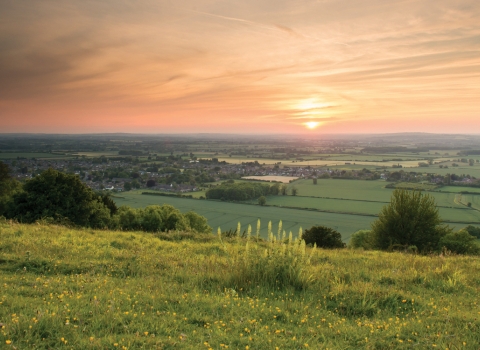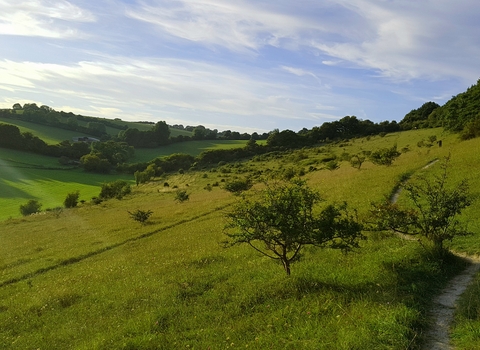
Jim Asher
Oakley Hill
Know before you go
Dogs
When to visit
Opening times
Open at all timesBest time to visit
March to NovemberAbout the reserve
A hidden gem
Hidden behind the imposing, but now peaceful, chalkpits at Chinnor, Oakley Hill is made up of old downland, scrub and beech woodland. Rare grassland Chalk grassland like this - once common along the escarpment - is now rare due to a decline in grazing and invasion by scrub, but BBOWT is looking after this rarity by using traditional methods.
Chalk soil specialists
Wild flowers such as Chiltern gentian, wild thyme, chalkhill eyebright, clustered bellflower, pyramidal orchid and yellow-wort thrive in this poor soil. Wayfaring-trees, often found around chalk grasslands, display clusters of creamy white flowers in spring. In late summer, butterflies, such as the comma, drink juices from their ripe berries. There are a few remaining juniper plants here. Once a dependable early coloniser of open grassland, juniper is now uncommon in the Chilterns.
Life in the dark
Very little grows under the dense shade of the beech wood canopy. Look out for the bird's-nest orchid, which appears to seek out the darkest parts of the wood. This plant requires no light, instead getting all its nutrients from dead material in the soil. It takes its name from its mass of short, thick roots, said to resemble a birds's nest. You may find bluebells and dog's mercury growing in glades created by fallen trees.



